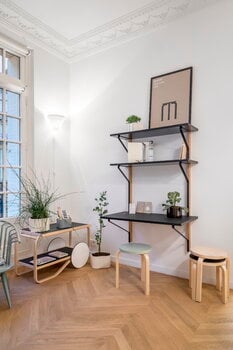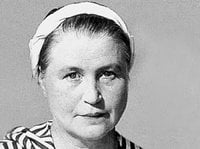The Riihitie plant pots, designed by Aino Aalto for the family’s home in Helsinki, were part of the collection the Aaltos presented at the Paris World Fair in 1937. 80 years later, Artek launched the ceramic planters, named after the street address of their original setting, in celebration of the centenary of Finland’s independence. Organic, undulating design of the handcrafted Riihitie pots reflects the Aaltos’ close connection to nature.
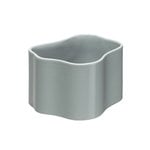
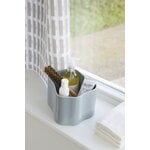
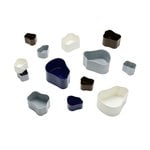
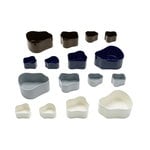
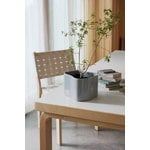

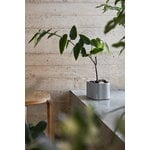
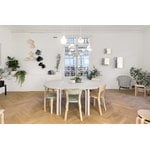
Riihitie plant pot B, small, light grey
Artek
Description
The Riihitie plant pots, designed by Aino Aalto for the family’s home in Helsinki, were part of the collection the Aaltos presented at the Paris World Fair in 1937. 80 years later, Artek launched the ceramic planters, named after the street address of their original setting, in celebration of the centenary of Finland’s independence. Organic, undulating design of the handcrafted Riihitie pots reflects the Aaltos’ close connection to nature.
Product details (6)
- Material
- Glazed ceramic
- Colour
- Light grey
- Length
- 19 cm
- Width
- 16 cm
- Height
- 12 cm
- Notes
- No drainage hole in the bottom. Suitable for indoors only.
- Product ID
Designer
Aino Aalto (1894-1949) was a well-known Finnish architect and designer. She studied architecture at the Helsinki University of Technology like her husband, the famous Alvar Aalto. In 1923 she went to work at the office of Gunnar A. Wahlroos, Jyväskylä, and switched to Alvar Aalto's office the following year.
This was the beginning of a long and fruitful partnership. In 1935 Aino Aalto, together with Alvar Aalto, Maire Gullichsen and Nils-Gustav Hahl, founded Artek, a world renowned furniture and lighting company. She played an important role in the company and worked as Managing Director of Artek from 1941 to 1949. Aino Aalto had a brilliant career as a furniture and interior designer, an architect and a photographer, but is mainly known for her glassware design. Aino Aalto’s most famous design is probably the Aino Aalto glassware range, created in 1932 with the name of Bölgeblick, rings of water. The range was designed for a competition which was organized with the aim of producing drinking glasses that would be suitable for mass production. Aino Aalto, who in the competition beated also his husband, Alvar Aalto, was inspired by the rings made when a stone hits the water. Her design gained immediate international recognition and won the Gold Medal in the 1936 Milan Triennal. In production since 1932, Aino Aalto’s glasses are ideal for the everyday use but also for elegant dinner parties. Their simple design is what makes them a timeless classic – perfect for the table still today as it was in 1932.
Read an article about Aino Aalto >
Would you like to read more about Aino Aalto and her work? Discover our books:
Aino Aalto, Iittala, Alvar Aalto Homes, Alvar Aalto Designer
Reviews (1)
5
Based on 1 reviews
-
S
Satu K
Turku, Finland
86 days ago
Sustainability
The Product Sustainability Framework, our criteria of sustainable design, helps you find the most sustainable products in our selection. Read below which sustainability criteria this product has met.
Working conditions & labour 7/9
-
Equal opportunities for all employees
-
Commitment to UN Global Compact, fair compensation for all employees
-
Corporate responsibility requirements defined and communicated for suppliers
-
Systematic work for improved inclusion and well-being in the workplace
-
Transparent supply chain
-
Suppliers' compliance to a code of conduct ensured
-
Compliance to the UN Guiding Principles on Business and Human Rights ensured in the supply chain
-
Direct suppliers audited and certified
-
Support for community involvement in the supply chain
Eco-friendly production 7/9
-
Fair and resource-wise water-use in production
-
No incineration or landfilling of returned items
-
No use of endangered species as materials
-
No direct environmental emissions or waste (excl. GHGs) from production
-
Production and material sourcing that respect biodiversity, animal rights, and natural ecosystems
-
Material-efficient and ecological packaging
-
No potentially harmful chemicals used in own production
-
The sustainability of direct suppliers' production is addressed and monitored
-
Positive impact on nature’s well-being through operations that regenerate natural ecosystems
Climate impact 5/8
-
Company's direct greenhouse gas emissions identified and commitment to reduction
-
Product's carbon impact identified and commitment to reduction
-
Guidance on energy- and eco-efficient use of the product
-
Contribution to climate initiatives beyond the brand’s direct operations
-
100 % renewable energy in own production and operations
-
Low-carbon or compensated transportation
-
Carbon footprint of the product calculated and goals set to reduce it
-
Carbon neutral or carbon negative product
Sustainable materials 6/6
-
Sustainable and long-lasting material choices
-
No harmful or hazardous substances
-
Responsible raw material sourcing and production
-
Materials suited for circularity: monomaterials, recyclable finishings, renewable or recycled contents etc.
-
Ecological materials: natural, biodegradable, recyclable or recycled contents
-
Outstanding materials in terms of innovativeness, responsibility, sustainability and circularity: local production or sourcing, 100 % recycled content, C2C-certification etc.
Circular design 5/5
-
High aesthetic quality promoting long-term use of the product
-
Technically durable product design and material choices
-
Design for enduring life-long quality
-
Design and support for product maintenance, repair and upgradability
-
Innovative circular design solutions: circular service system, resale platform, remanufacturing, collection of used products, etc.





